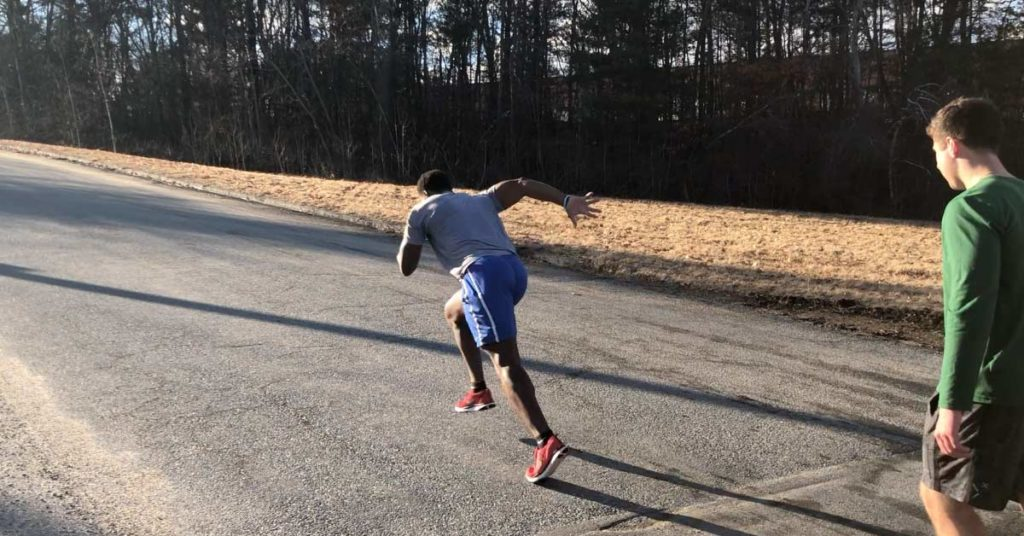So... if you want to become the best runner you can possibly be, you'll need to practice many different types of running, in many different conditions and on many different terrains. You'll not only avoid the doldrums of doing the same thing over and over by doing so but will get stronger in the process.
So what are the different types of running?
Well, according to DOGFIT, There are eight basic types of runs that are practiced by runners of all levels. These evolved over the years through a trial-and-error process, have shown great results and are worth practicing and working them into your training. The sky's the limit on how you can do that. Mix it up! You can add all kinds of combinations and permutations to these formats — for example by combining two of them within a single session — but even in their most basic form, these workouts will help you become a better, faster and stronger runner.
1. Recovery RunA recovery run is a relatively short run performed at an easy pace simply to keep active and avoid lethargy whilst the body is recuperating (often referred to as ‘active recovery’).
Recovery runs add a little mileage to a runner’s training volume without adding strain or taking away from performance in the harder, more important workouts that precede or follow them.
Recovery runs are best done the day after a hard workout. Do your recovery runs as slowly as necessary to feel comfortable despite lingering fatigue from your previous run.
Example: 4 miles easy
This is where you need to spend most of your training time.
On their own, base runs are not meant to be strenuous, but they are meant to be done frequently, and in the aggregate they stimulate big improvements in aerobic capacity, endurance, and running economy. They make up the bulk of your weekly training mileage.
This classic long distance training zone is effective for weight control and increases the network of capillaries and therefore blood circulation.
The effort/fatigue factor is low, but can be increased to higher levels for fitter athletes. The focus is to keep a natural rhythm. Heart rate and breathing rates are increased but a conversation should still be possible. Frequent sessions at this level are possible without worrying about becoming exhausted.
Example: 6 miles at natural pace
3. Long Run
As a general rule, your longest run should be long enough to give you confidence that you can finish the race.
Example: 15 miles at natural pace
4. Progression Run
A progression run is a run that begins at a runner’s natural pace and ends with faster segments. These runs are generally intended to be moderately challenging—harder than base runs but easier than interval runs. They are considered a medium-effort workout.
Example: 5 miles at natural pace + 1 mile at marathon pace + 1 mile at half-marathon pace
5. Fartlek
Fartlek is from Swedish ‘speed play’. A fartlek run is a base run that mixes in intervals of varying and sometimes random duration or distance. They serve as a less-structured alternative to a traditional interval training session such as a track workout.
It’s a good way to develop efficiency and resistance at faster speeds. It can simulate races where you may want to hang on to another runner to overtake them on the finish line or sections that will be harder than others when you have to dig deep.
Example: 6 miles at natural pace with sections where if one runner pulls away, everyone goes with him alternating who is leading regularly. The leader decides how long and how fast to push.
6. Hill Repeats
Oh yes! The notorious hill repeats that we have all heard about and love to hate!
Hill repeats are repeated short segments of hard uphill running. This is a hard workout but the benefits are huge; they increase leg power and strength, aerobic power, high-intensity fatigue resistance, and pain tolerance.
The ideal hill on which to run hill repeats features a steady, moderate gradient of 4% to 6%. Hill repetitions are typically done after the base-building period as a relatively safe way to introduce harder high-intensity training into the program.
Example: 2 miles of easy jogging (warmup) + 10 x 45-second hill repeats at a hard effort with 2-minute jogging recovery between reps + 2 miles easy jogging (cooldown)
7. Tempo Run (or Threshold run)
A tempo run is a sustained effort at lactate threshold intensity (also called Anaerobic Threshold AT or simply Threshold).
Threshold is the fastest pace that can be sustained for 60 mins in highly fit runners or fastest pace that can be sustained for 20 mins in less fit runners. Tempo (or Threshold) work has proven to increase speed for a prolonged period of time.
In this zone, the intensity is right under or on the lactate threshold, according to the duration, physical condition, level, motivation, etc and is considered a quite high effort/fatigue factor.
Trying to keep a conversation going becomes difficult because of fast and heavy breathing. The high effort required to maintain this zone requires focus and mental toughness.
Example: 1 mile of easy jogging (warmup) + 4 miles at lactate threshold pace + 1 mile of easy jogging (cooldown)
8. Intervals
Interval workouts consist of repeated shorter segments of fast running separated by slow jogging, walking or standing recoveries. This format focuses on injecting some speed into the workout.
Interval workouts are typically categorized as short intervals and long intervals, and are typically performed on the track where you can precisely measure distance and time.
Long intervals are 600 to 1,200-metre segments run fast with easy jogging recoveries between them. They are excellent means of progressively developing efficiency and fatigue resistance at fast running speeds.
Example: 1 mile of easy jogging (warmup) + 5 x 1K at 5K race pace with 400m jogging recoveries + 1 mile of easy jogging (cooldown)
Short intervals are 100 to 400m segments run very fast. They boost speed, running economy, fatigue resistance at fast speeds and pain tolerance.
Distance runners typically use shorter, faster intervals earlier in the training cycle to increase their pure speed and then move to slightly longer, endurance-based intervals to improve fatigue resistance.
Example: 1 mile of easy jogging (warmup) + 10 x 300m at 1 mile race pace with 200m jogging recoveries + 1 mile of easy jogging (cooldown)
So there you have it friends. Mixing up your training by adding in different types and running in different places on different terrains is the key to staying motivated. I don't know about you but this is something I really needed to hear today. Marathon training can sometimes get me so focused on making the long runs count that I forget that the shorter runs are of equal value; especially when the workouts are specific and intentional. Tomorrow I plan on mixing in some hill repeats and throwing in a few fartleks? How about you? How will you mix things up? Whatever you plan though, don't forget to smile, have fun and enjoy the workout! After all, that's what it's all about.
Happy Running!











No comments:
Post a Comment